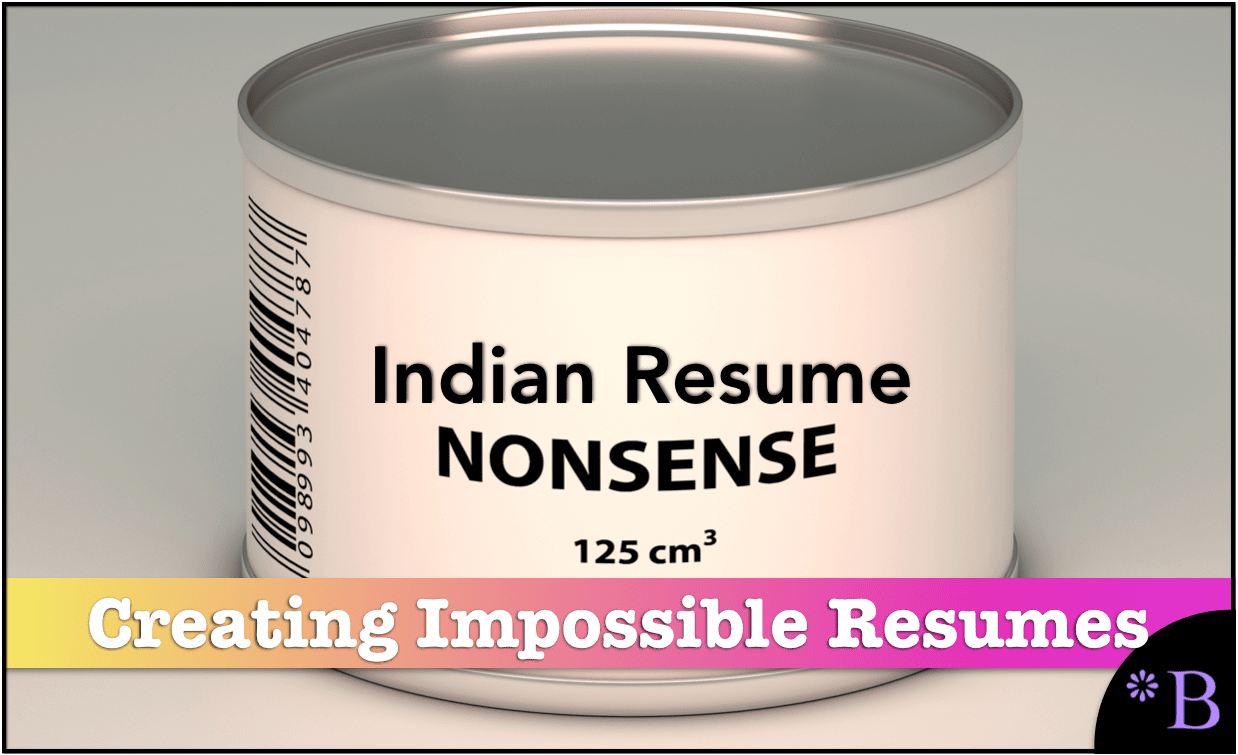How Indians Rig Job Descriptions To Block Domestic Employment And Enable H1-B Entry
Executive Summary
- Indians have perfected writing job descriptions so that no candidate can meet all the requirements.
- This then opens the door for an H1-B candidate.

Introduction
It is difficult not to notice how specific many IT job descriptions have become.
How Indians Rig Job Descriptions To Block Domestic Employment And Enable H1-B Entry
Many job descriptions essentially describe a candidate that does not exist. There is a rule about H1-B Visas that the job description must be published for a certain amount of time, and then evidence must be shown to immigration that no individuals who would fit the job description could be found.
This is easily managed by creating such a ridiculous job description that no domestic candidates qualify. Now, the job can be opened to a candidate from India who will add those qualifications to their resume. There is no validation of the skills listed on the resume; they are primarily self-reported.
The Lie About Indian Immigration Being About Skills
This is the problem with the continual comments by Indian resources that the entirety of Indian immigration to the US under H1-B is based on skills. Skills can be added to resumes if the people filling out H1-B Visa applications declare that the individual from India has those skills. This is explained in the following quotation.
“Most people who apply for H1B have a Indian 3 year degree education which I strongly believe is no better than a High School Degree in United States. These 3 year degree holders take a 2 or 3 month computer training and land in United States stating fake experience. There are thousands of companies in India which aid these people file a H1B petition and secure visa. These IT companies where potential H1B aspirant claims to have worked for, exists only on paper. They answer verification phone calls from USCIS or US embassy, have a web site and a physical address but there is NO actual Programming or Development done by this companies. After landing in the United States, the same people, put 7 or more years of experience in the United States to get job.” – Petition2Congress
Which led a commenter to state.
“Therefore, the bottom line is that we don’t need Fake IT Professionals who make up their fake degrees and fake resumes and take away our real jobs which is not acceptable at all. And I request the US Senate, The US Congress, The Homeland Security, and the USCIS and Labor Law departments to take the needed steps and right measurements to stop all these fraudulent workers, “
This quotation on a similar matter was from The Guardian in 2014.
“Labor brokers providing Indian high-tech workers to American companies have hijacked a professional visa program, creating an underground system of financial bondage by stealing wages and benefits, even suing workers who quit. About 840,000 people from around the world work in the United States on temporary visas, intended to help companies seek uniquely talented employees for specific jobs. In the tech realm, labor brokers often sponsor the visas, then contract out the workers to technology companies or government agencies to build databases, test software and complete other technical projects.”
Once one investigates, it turns out that H1-B Visa fraud is incredibly common. Again, this is from The Guardian.
“It has been the source of the vast majority of India’s fraudulent documents tied to H-1B visa applications, according to a June 2009 cable from the US State Department unearthed by WikiLeaks. Inflated work experience was a typical problem, the cable said, adding that of 150 companies in Hyderabad investigated by the US Consulate, 77% were “fraudulent or highly suspect.””
Wikileaks released a document internally sent out from the consulate in Chennai on this topic with the following quotation.
“India wide consular operations are among the busiest in the world. Some states such as Gujarat and Punjab are traditional sources of migration out of India and fraudulent applications from these areas are more common than from other regions of India. The state of Andhra Pradesh, in particular, its capital of Hyderabad, has been identified as a large center of documentary fraud which affects all Indian posts. An opinion poll published in the popular Times of India in January 2007 noted that 37% of the 1.1 billion Indians would emigrate if they had the chance. Most of India’s fraudulent applicants come from specific and easily defined regional areas within each consular district. These states have some of the most mobile populations in India and the largest concentrations of expatriate communities overseas, including in the United States. In New Delhi, cases originating from the Punjab comprise the majority of its IV and fraud caseloads, while the same can be said in Mumbai with Gujarat. Chennai and Hyderabad’s fraud workload comes principally from Andhra Pradesh. B1/B2 visa fraud is the most commonplace. Regionally-based fraud rings throughout the country, but especially in Hyderabad, continue to produce fraudulent documents for visa application and travel purposes. Some visa “consultants” and travel agents specialize in fraudulent experience letters and fake document packages, which include passport copies of false relatives, bogus financial documents, and affidavits of support.”
Conclusion
This is yet another example of Indians cheating on the H1-B program. Indians are constantly cheating in every manner possible, this is embedded in Indian culture as is covered in the article Does Indian Society Train Indians to be Cheat and Lie?
Indian IT Survey Results
To see our ongoing survey, which includes graphs of responses and specific comments from domestic workers all over the world who have had to work with Indians, see the website indianitsurvey.com
Sharing This Article
Share this article with someone you know by copying this article link and pasting it into your email so they can read the same information.